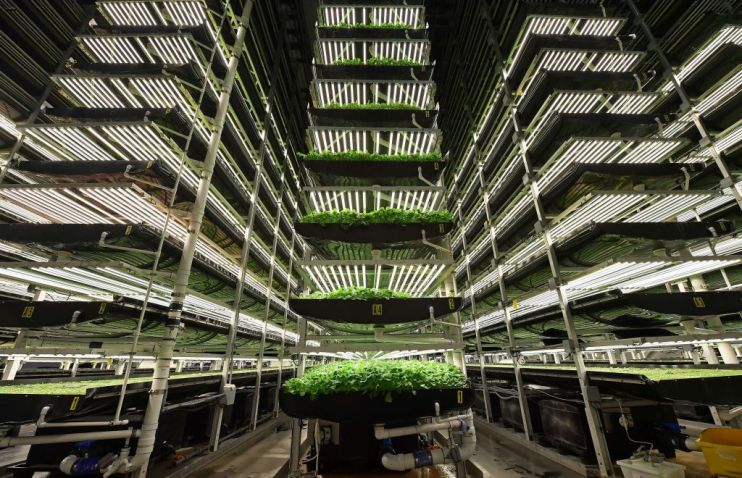Bring on the post-Brexit vertical farming revolution

As the UK and the EU stretch out yet another week of “will they or won’t they?” over a trade deal, like a painfully unromantic episode of Neighbours (no jokes about Australian models, please), businesses are not only trying to plan for what happens in January, but also questioning how much we should rely on goods moving seamlessly in and out of the country.
In relatively recent times, it was common to say that the internet and highly developed international supply chains had abolished distance. This was always an oversimplification — and at a time when the global business community is worrying about trade wars and tariffs, it seems hopelessly idealistic.
Borders are back, and with them the possibility of big delays.
Waiting an extra few days for your electronics or new shoes to arrive from China may not seem like too much of an imposition, but not all sectors are affected equally. One area where time and distance matter more than most is food — as I have discovered since starting a vertical farming company in East London two years ago.
Vertical Farming, where you grow indoors and control the environment — the temperature, light, CO2 — has been expanding rapidly in recent years. This has been driven in large part by environmentally conscious consumers attracted by the fact that it uses much less water than traditional agriculture, and no pesticides.
These are very good points, but another factor is becoming ever more important: proximity to your customer.
You’re probably aware that the UK imports a lot of the food it consumes. According to official statistics, just over half of the food we eat comes from our own farming and fishing industries, but this figure is much lower if you account for ingredients which are grown elsewhere and then processed in the UK.
Should we care? After all, extensive consumer choice all year round is very popular. UK supermarkets offer green beans from Kenya, cherry tomatoes from Spain and pineapples from Costa Rica to customers because there is plenty of demand. Eating more seasonal British food is gaining popularity, but it seems unlikely our cosmopolitan tastes will vanish altogether.
That’s where vertical farming comes in. We like the variety of cuisines we can enjoy in London, particularly the little luxuries that have come to mean so much more as we’ve spent the last few months cooped up in our homes. The green curry takeaway that you look forward to all week wouldn’t taste as good without Thai basil, your Vietnamese Pho would lack something without fresh coriander.
I mention herbs that originate from warmer climates in particular because, even though farmers do grow them in the UK, we tend to import them. They are delicate, carry a lot of flavour in a small volume, and don’t grow very high. That makes them ideal for vertical farming — in our case in a converted industrial unit in East London, built with hardware from Yorkshire.
Being able to put vertical farms close to city centres, near customers (which for us are restaurants), means the reduction in food miles can be massive: lower carbon footprint, and no customs forms to fill in or tariffs to pay.
Vertical farming doesn’t compete with traditional farming, which will continue to produce the overwhelming bulk of food grown in the UK. Just as new technology, and new ideas, greatly increased agricultural production starting in the eighteenth century, so vertical farming can use technology to expand how and where we can grow the food we want, more sustainably.
Given the UK’s changing place in international supply chains, and the government’s desire to encourage British companies to lead in developing technologies, vertical farming is just the sort of industry we need.
Main image credit: Getty